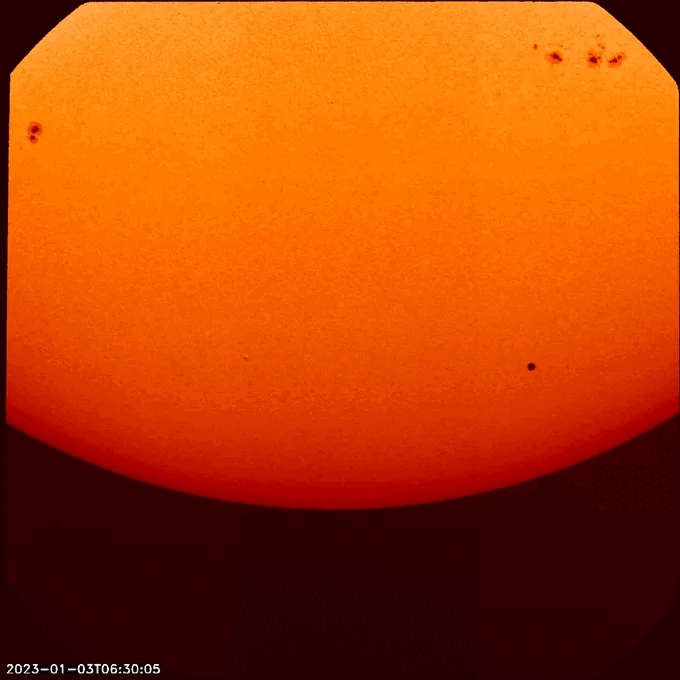The Solar Orbiter Spacecraft Observes Mercury Transit Across the Sun, a Rare Moment.

The black dot moving in this video is Mercury crossing the Sun on January 3, 2023, recorded by the spacecraft. (Image: ESA, NASA)
To capture this moment, scientists combined three high-tech instruments on the Solar Orbiter: the Polarimetric and Helioseismic Imager (PHI), the Extreme Ultraviolet Imager (EUI), and the Spectral Imaging of the Coronal Environment (SPICE).
The EUI instrument was tasked with recording a video of Mercury as it moved across the Sun, with the smallest planet in the Solar System clearly visible in the footage.
In the images provided by PHI, Mercury appears as a black disk on the lower right side of the Sun, with sunspots visible on its surface.
By searching for small dark movements against the bright background of the Sun, scientists can detect exoplanets and use the spacecraft’s instruments to estimate their orbital periods and sizes.

Mercury is the small black dot rapidly moving towards the bottom of the Sun’s disk. (Image: NASA, ESA).
This technique is known as the transit method for exoplanet detection, a particularly useful technique that astronomers frequently employ.
In June 2023, the European Space Agency (ESA) will gain clearer insights into Mercury as it passes across the Sun again.
The Solar Orbiter spacecraft is equipped with high-resolution telescopes to capture images as close to the Sun as possible.
The Solar Orbiter’s first close approach to the Sun occurred in March 2022, coming within about 42 million kilometers of the central planet, which is roughly 1/4 the distance from the Sun to Earth and within Mercury’s orbit.





















































